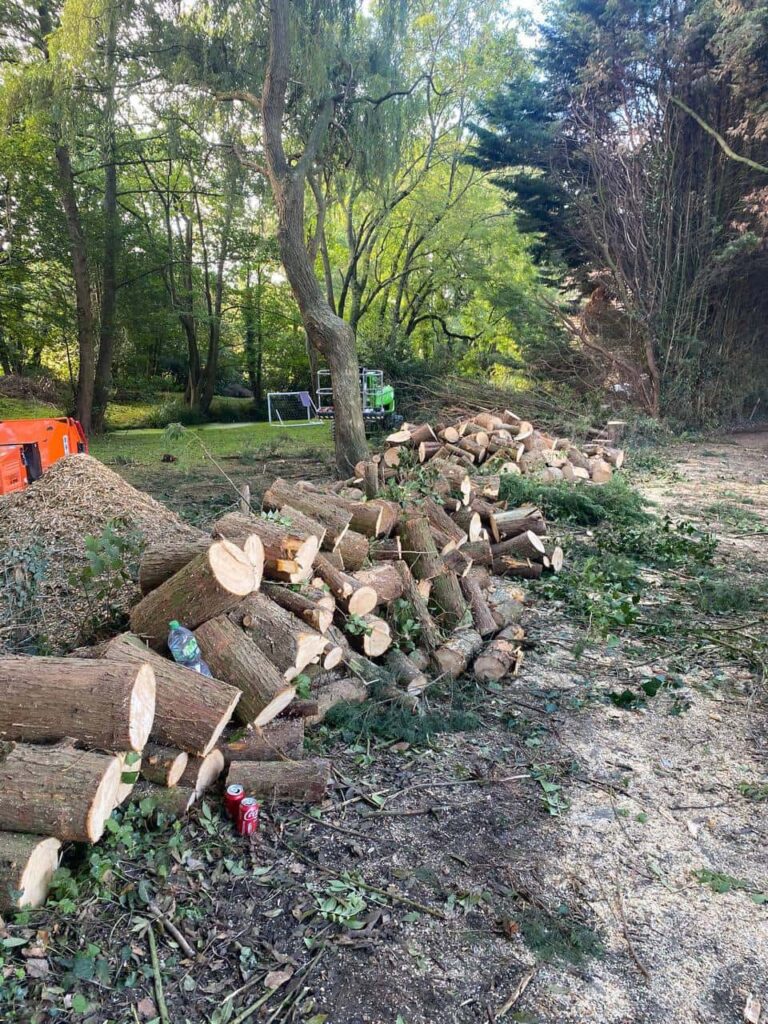How to Safely Remove a Large Tree with Sectional Dismantling
Introduction: Removing a large tree can be complex and challenging, especially when safety and the preservation of the surrounding area are top priorities. Sectional dismantling is a tree removal technique that offers a safe and efficient solution for handling large trees in tight spaces or near structures. We understand the importance of safety and tree preservation at Kempston Tree Surgeons. In this blog post, we’ll guide you through safely removing a large tree using sectional dismantling.
Assessing the Tree
Before you begin the process of sectional dismantling, it’s crucial to assess the tree’s health, structure, and the surrounding environment. Here are the key steps:
- Tree Health Assessment: Determine the overall health of the tree. Look for signs of disease, decay, or structural instability. A healthy tree is easier to work with and poses fewer risks.
- Environmental Assessment: Evaluate the area around the tree. Consider the proximity of structures, power lines, and other trees. Identify any potential hazards or obstacles that may affect the removal process.
Creating a Plan
Once you’ve assessed the tree and its surroundings, it’s time to create a detailed removal plan. Here’s what the plan should include:
- Cutting Sequence: Determine the sequence in which tree sections will be cut and removed. Start with the smaller branches and move to the larger sections.
- Equipment: Ensure you have all the necessary equipment, including ropes, harnesses, pulleys, chainsaws, and rigging gear. Make sure all equipment is in good working order.
- Safety Measures: Develop a comprehensive safety plan for the removal process. This includes identifying escape routes, establishing safe work zones, and ensuring all team members are trained and equipped with personal protective gear.
Executing Sectional Dismantling
Now, let’s break down the process of safely removing a large tree using sectional dismantling:
- Branch Removal: Start by removing the smaller branches. This reduces the weight and simplifies the removal of larger sections.
- Strategic Cuts: Make strategic cuts in each section to create manageable pieces. The precise location of these cuts depends on the tree’s structure and the cutting sequence you’ve planned.
- Rigging: Attach ropes and gear to each section that needs to be lowered. This equipment will help control the descent of the sections and prevent damage to nearby structures or the environment.
- Lowering Sections: Carefully lower each section using the ropes and rigging gear. Ensure that the sections land in the designated safe zones.
- Cleanup: Once all sections are safely on the ground, remove debris and clean up the area. This includes disposing of branches and logs properly.
Safety Measures
Throughout the sectional dismantling process, safety should remain a top priority. Here are some critical safety measures to follow:
- Ensure all team members are trained and certified in tree surgery and safe work practices.
- Use appropriate personal protective equipment (PPE), including helmets, safety glasses, gloves, and harnesses.
- Maintain clear communication among team members throughout the process.
- Regularly inspect equipment for wear and tear and replace any damaged items.
- Have an emergency response plan in case unexpected situations arise.
Conclusion: Safely removing a large tree using sectional dismantling requires careful planning, precision, and a strong commitment to safety. Suppose you have a large tree on your property that needs removal and are concerned about safety or preserving the surrounding area. In that case, it’s advisable to consult professionals like Kempston Tree Surgeons. Their expertise in sectional dismantling ensures that your tree can be safely and efficiently removed while protecting your property and the environment.
Call us on: 01234 862 086
Click here to find out more about Kempston Tree Surgeons
Click here to complete our contact form and see how we can help with your tree’s needs.

